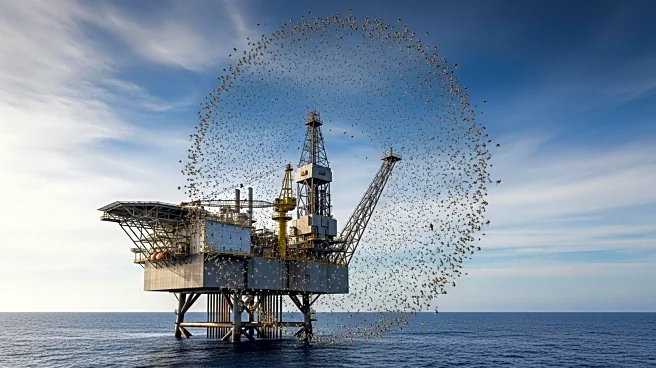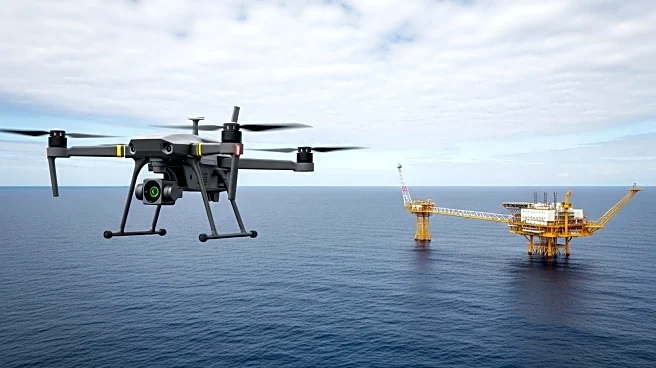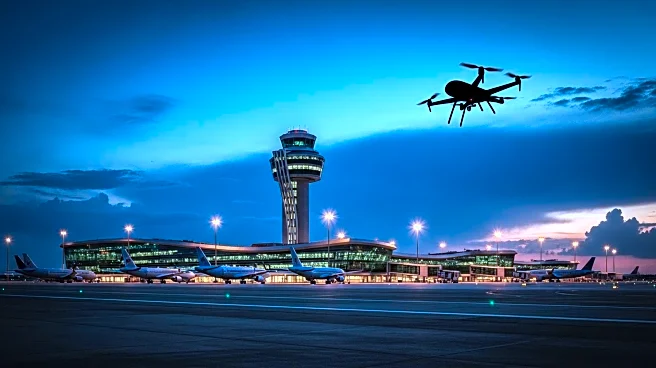What's Happening?
Thousands of hoverflies have been observed swarming an oil rig in the North Sea, located between the United Kingdom, Norway, and Denmark. Engineer Craig Hannah noticed these insects, often mistaken for bees, resting on the rig before taking off simultaneously. Hoverflies are known for their role in pollination and their ability to migrate over long distances. Hannah collected samples of these flies and sent them to the University of Exeter for research. Biologist Eva Jimenez-Guri and her team discovered that the hoverflies carried significant amounts of pollen and traveled over 300 miles, indicating their potential impact on pollination and genetic diversity in plants.
Why It's Important?
The presence of hoverflies on an oil rig in the middle of the ocean highlights their remarkable migratory capabilities and their role in pollination. This discovery could have implications for understanding insect migration patterns and their contribution to ecosystem dynamics. The ability of hoverflies to carry pollen over long distances suggests they may play a crucial role in introducing genetic diversity to plant populations, which is vital for adaptation and resilience. This research could inform conservation strategies and enhance our understanding of pollinator networks.
What's Next?
The research team plans to investigate whether the pollen carried by hoverflies survives the journey and can successfully pollinate plants upon arrival. Further studies will focus on the ecological impact of hoverfly migration and their role in pollination across different environments. Collaboration with other researchers and institutions may lead to broader studies on insect migration and its effects on biodiversity.
Beyond the Headlines
This phenomenon underscores the interconnectedness of ecosystems and the importance of pollinators in maintaining ecological balance. It raises questions about the impact of human activities, such as oil drilling, on insect behavior and migration patterns. Understanding these dynamics could lead to more sustainable practices and policies that protect pollinator habitats and support biodiversity.












